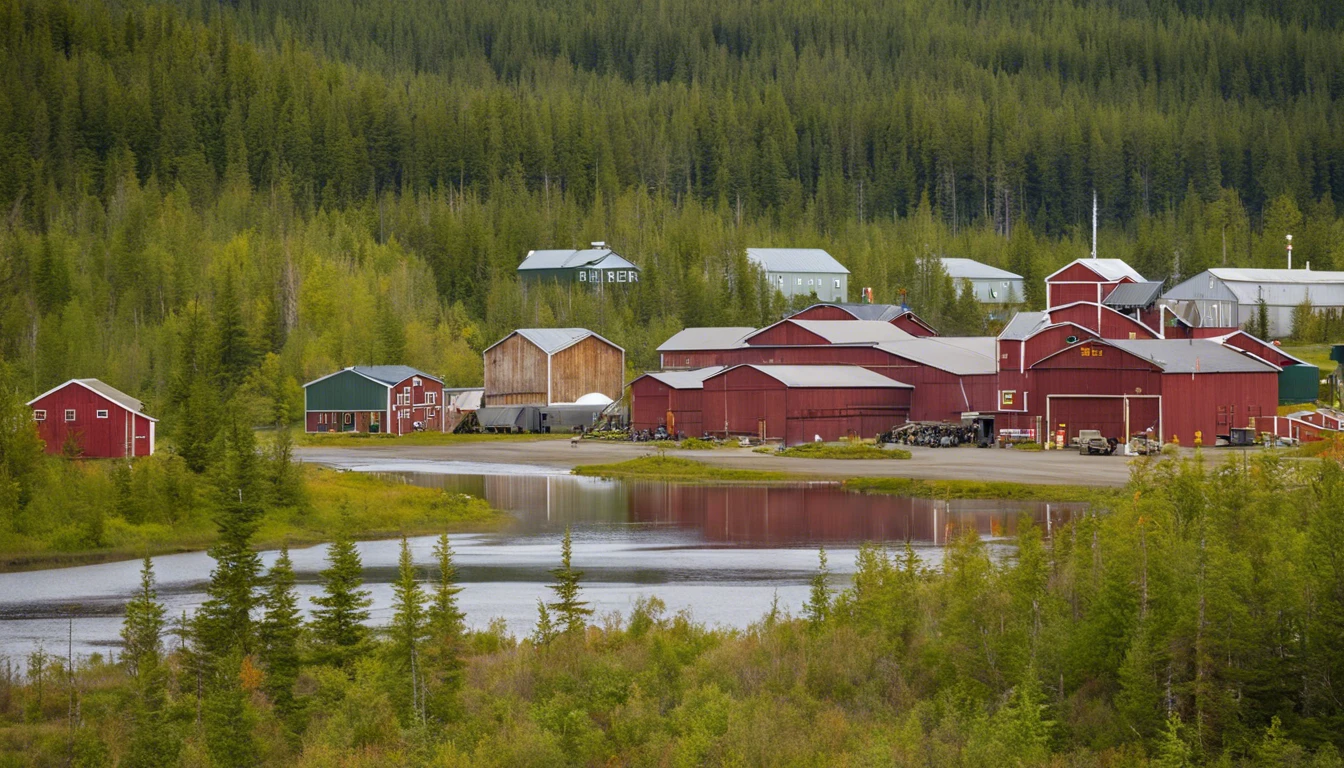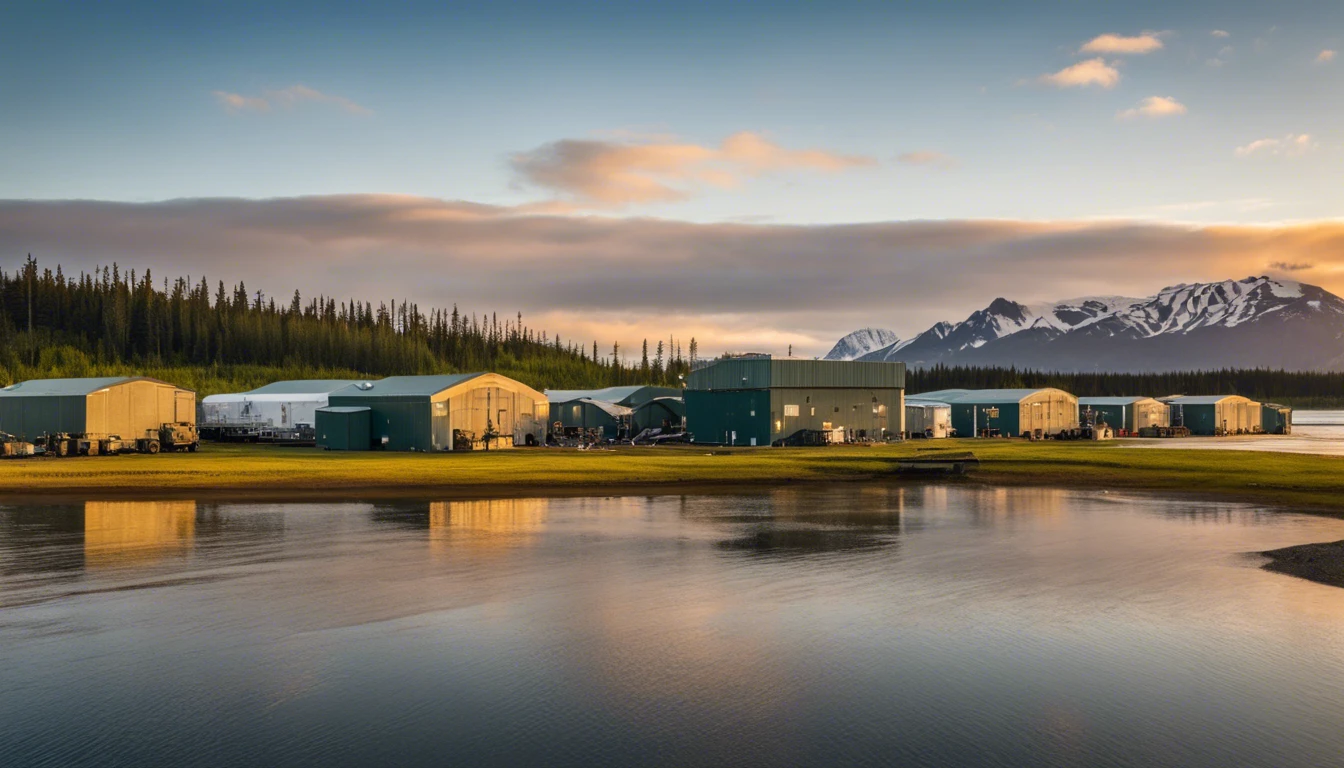Cost of Living Allowance (COLA)
Let's talk about the Cost of Living Allowance, or COLA. This is an additional amount of money that service members receive when they are stationed in Alaska. The purpose of COLA is to help offset the higher costs associated with living in Alaska, which can be quite significant compared to other parts of the United States. It's particularly important to consider these costs if you're contemplating moving to Alaska and hiring a reputable moving company.
COLA is calculated based on a variety of factors, including the current economic conditions in Alaska, the average cost of goods and services in the area, and the service member's rank, years of service, and number of dependents. According to the U.S. Office of Personnel Management, COLA rates for 2024 in Alaska are 1.69% for Anchorage, Fairbanks, Juneau, and 3.21% for Other Alaska, with locality rates at 31.96% source. It's worth noting that these rates have slightly decreased from 2023 and have seen a significant decrease since 2016, when Anchorage, Fairbanks, Juneau had a COLA rate of 5.31%.
In addition to COLA, there are other financial incentives to consider when moving to Alaska. For instance, the city of Anchorage has implemented the Anchorage Remote Worker Incentive Program, offering up to $1,000 in reimbursements for people moving there. This can be particularly beneficial if you're planning to engage a moving company for your move to Alaska.
Another unique financial aspect of living in Alaska is the Alaska Permanent Fund Dividend, established in the early eighties, which shares the state's oil wealth with its residents. Eligibility for this fund requires at least one full year of residency in Alaska, and the dividend amount varies each year. For example, payments started at around $400, reaching up to $2,072 in 2015. Specific yearly values include $1,305 in 2009, $1,281 in 2010, $1,174 in 2011, $878 in 2012, $900 in 2013, $1,884 in 2014, and $1,600 in 2018. Families, such as a family of four, could collectively receive funds, such as $6,400 in one instance. However, considering the increased living costs and high travel expenses out of the state, these funds may not cover much.
It's important to note that while you do receive COLA when stationed in Alaska, you do not receive an Overseas Housing Allowance, or OHA. This is because, although Alaska is geographically isolated, it is still considered part of the United States.
So, while the OHA is not applicable, the COLA, the Anchorage Remote Worker Incentive Program, and the Alaska Permanent Fund Dividend can definitely help make your transition to life in Alaska a little easier financially. Just remember to budget wisely and take into account the higher cost of living in this beautiful but remote state, especially when planning your move and choosing a moving company.

Moving Options to Alaska
In relocating to an Alaskan military base, you have a few options to consider. These options are based on your preferences, time, and budget. They include flying, driving, or sailing. Let's break down each of these options.
Flying
This is the quickest way to get to Alaska. Several airlines operate flights to Alaska from different parts of the U.S. However, you have to consider the cost and the issue of moving your belongings. Depending on where you're moving from, you may have to consider the cost of shipping your belongings separately, which can considerably raise the overall cost of your move.
Driving
If you've got some time on your hands and you fancy a cross-country adventure, you could choose to drive to Alaska. It's a long journey, but you'll get to see some amazing sights along the way. One cost-effective strategy often employed by individuals relocating to Alaska is to purchase a cargo trailer in the lower 48 states, load it with their possessions, and sell it upon arrival in Alaska. This method has been known to be economical due to the strong market for trailers in Alaska (source). For instance, if you're moving to Juneau, you'll have the chance to drive through the scenic Mendenhall Valley, a neighborhood that has seen an 8% population growth since 2000 and offers suburban comfort and outdoor adventure opportunities.
However, driving also comes with its set of challenges and costs. For example, moving from Seattle to Anchorage (approximately 2,260 miles) can be quite costly. Renting a moving truck can range from $3,192 to $6,721 depending on the size of the truck. On top of that, there are additional costs like gas, which can start at $852 for a 15’ truck from Seattle to Anchorage, not factoring in higher gas prices in Canada and Alaska. Accommodation costs can add at least $500 for overnight stays, with the average cost per night around $140 for a room accommodating four people. The total moving expenses can be estimated between $5,192 and $8,692, excluding food and unforeseen issues like flat tires (source).
Sailing
If you're not in a hurry and would like to enjoy a scenic journey, you can choose to sail to Alaska. Several ferry services operate between Washington State and Alaska. The journey can take a few days, but you'll have the opportunity to experience the stunning coastline scenery. This option might be particularly appealing if you're moving to Douglas, an island community that provides a serene living environment and stunning views.
In terms of moving your belongings, the Transportation Management Office (TMO) can arrange for the shipment of your household goods and vehicle. This can help to ease the stress related to the move.
Alternatively, you have the option of a Personally Procured Move (PPM). This allows you to move your belongings yourself. The good thing about a PPM is that you may be eligible for reimbursement. This means the government may cover some or all of the moving costs. However, you'll need to keep all your receipts and complete the necessary paperwork for this.
Another method to consider is utilizing a service that trucks or barges packed goods to Alaska. These services usually charge around $750 per linear foot for transportation, with items taking approximately 8-9 weeks to arrive (source).
As you can see, there are several ways to move to an Alaskan military base. Your choice will depend on your personal circumstances and preferences. Whichever option you choose, remember to plan ahead and make arrangements well in advance to ensure a smooth and stress-free move. And if you're still deciding on where to live, consider the convenience and accessibility of Lemon Creek, an area characterized by medium-sized to small mobile homes and single-family houses, with a significant portion of government workers residing in the area.
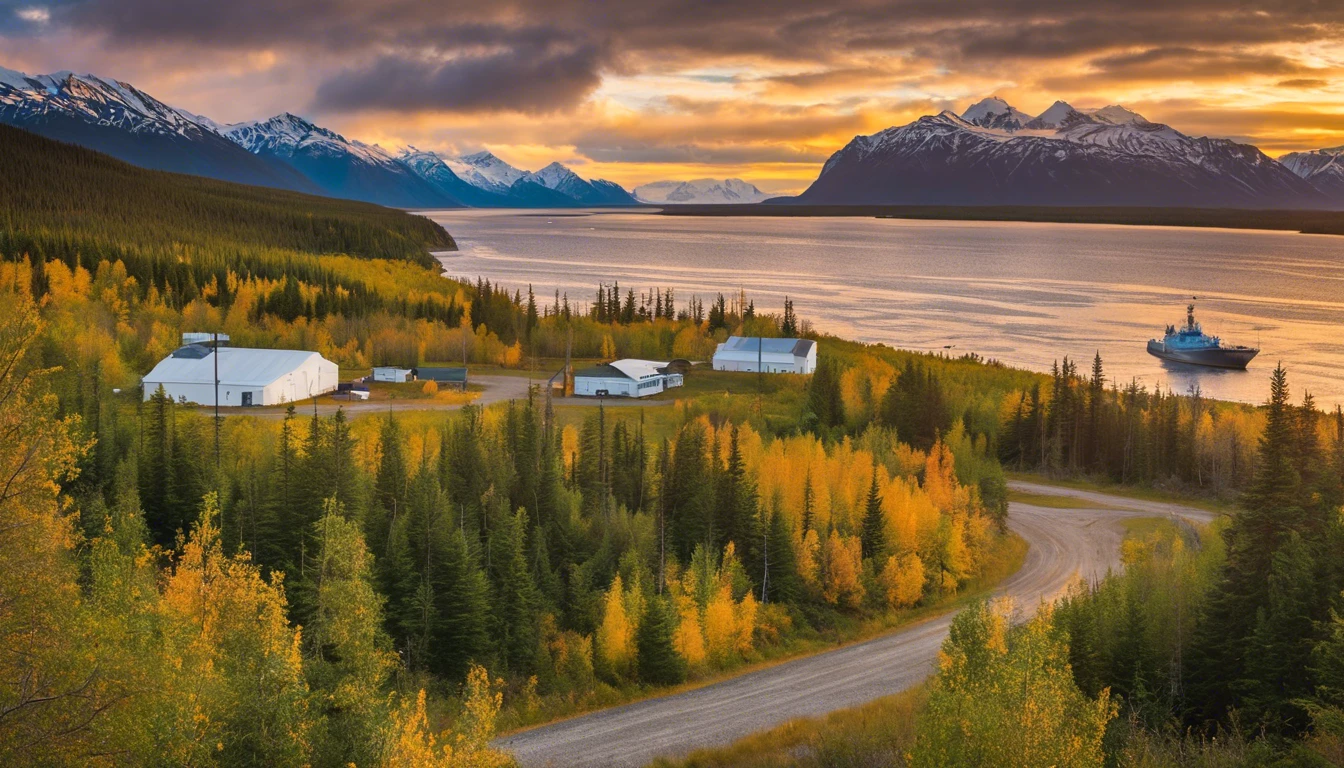
Housing in Alaska
Moving to an Alaskan military base comes with a big question: Where are you going to live? The housing options here are quite diverse. You can choose between living on-base or off-base, each with its own pros and cons.
Let's first talk about on-base housing. These are usually privatized and may cover or subsidize your utilities. This could be a great option if you want to live in a community with other military families, enjoy shorter commutes, and have easy access to base amenities.
On the other hand, off-base housing gives you a bit more freedom and independence. You'll receive a Basic Allowance for Housing (BAH) to help with your living expenses. However, keep in mind that this allowance doesn't cover potentially high-energy costs, which can be a bit of a shock in Alaska's colder months.
So, what's the cost like? In Alaska, the median adjusted rent is about $1,279 per month. If you're thinking about buying a house, the average home sale price has risen to $422,584 in 2022. source
To sum it up, here are your options:
- On-base housing: Privatized, may cover or subsidize utilities, close community, and easy base access.
- Off-base housing: More independence, BAH applies, but doesn't cover high energy costs.
Remember, the choice between on-base and off-base housing is a personal one and depends on your family's needs and preferences. If you're considering off-base housing, Alaska offers a range of neighborhoods each with unique appeal, living conditions, and amenities.
For instance, Diamond Ridge, officially known as Ch’aqiniggech’ in Dena'ina, has a median household income of $87,464 and a cost of living index of 107.7. It's praised for its natural beauty, rural and coastal ambiance, and family-friendly environment. Other options include Halibut Cove, known for its arts community, and Anchor Point, a community where nature's beauty is in abundance. For those interested in a mix of natural splendor and community warmth, Fritz Creek is an excellent choice. Lastly, Seldovia is known for its solitude, natural beauty, and community spirit, offering a blend of isolation and accessibility🔗.
In 2023, Alaska saw a significant development of new housing units across various boroughs and census areas, with a total of 768 new housing units added throughout the year. This included 144 new units in the Municipality of Anchorage and 34 in Homer, part of the Kenai Peninsula Borough. source
Take your time to research, ask around, and make the decision that's best for you and your family.
Particularly in a city like Anchorage, moving to Alaska presents an exciting opportunity for those seeking adventure amidst urban amenities and natural beauty. The region is noted for its welcoming community, where making friends is facilitated by a shared understanding among residents of the experience of relocating. Engaging actively in the community, joining clubs, socializing with co-workers, and meeting friends of friends are recommended ways to integrate. A significant proportion of Alaska's population has relocated from elsewhere, creating a culture of mutual support and hospitality🔗.
For those seeking a more off-the-grid lifestyle, Alaska offers large portions of remote land for sale annually. Living in these conditions requires a high level of self-sufficiency and cooperation with local communities to avoid conflicts over resources like hunting and fishing areas. The state's law enforcement has limited resources, meaning they generally only intervene if problems are reported🔗.
🔗: Why Homer, AK, is Your Family’s Next Dream Home Destination
🔗: What is it like moving to Alaska?
🔗: Can I just move to a remote part of Alaska and build a home undisturbed legally?
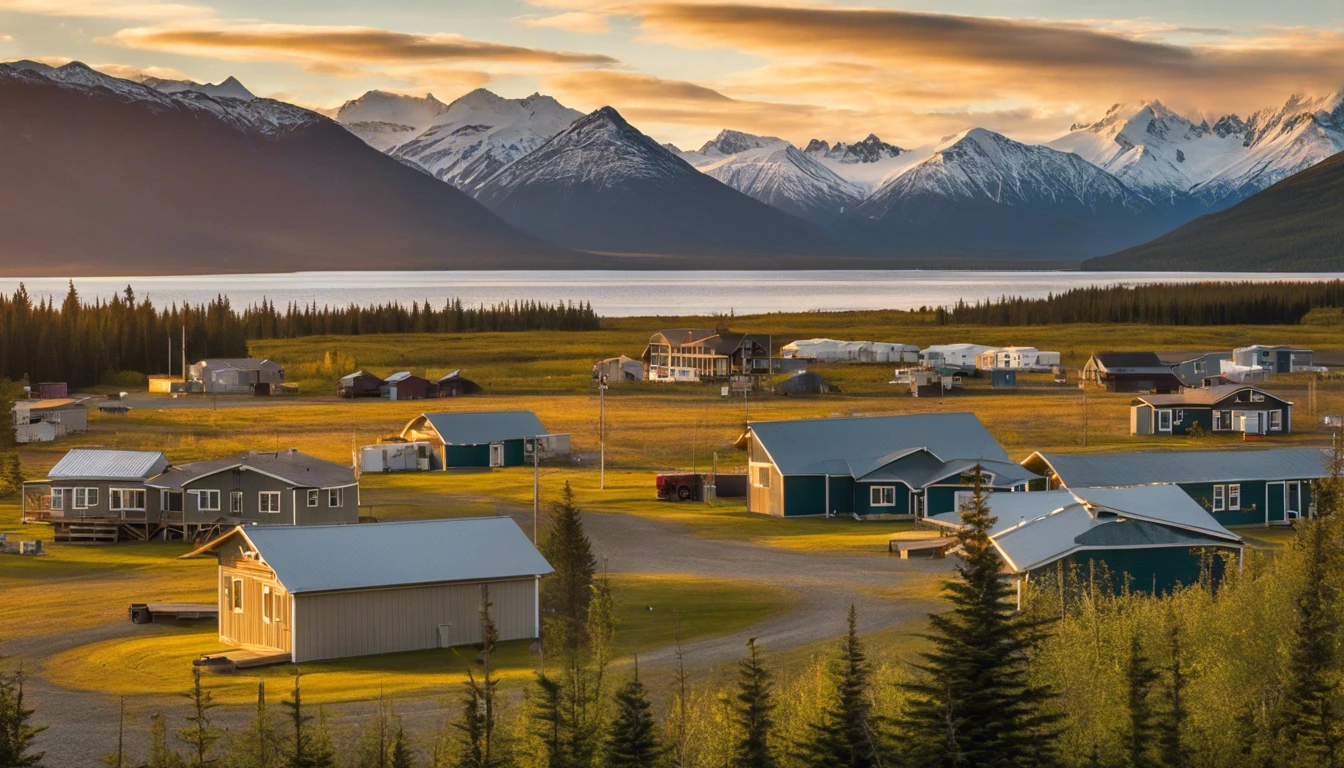
Tax Advantages in Alaska
In Alaska, your wallet can breathe a sigh of relief. The state has some serious tax advantages that could make your move much more financially friendly. Let's break it down:
-
No State Sales Tax: Unlike most of the US, Alaska doesn't have a state sales tax. This means that the price you see on the tag is actually the price you'll pay. No hidden fees or extra charges, you can budget confidently knowing that your dollar goes a little bit further here.
-
No State Income Tax: You read that right - Alaska doesn't have a state income tax either. So, not only are you saving on your everyday purchases, but you're also keeping more of your paycheck. The money you earn is the money you get to keep, making saving a whole lot easier.
-
Permanent Fund Dividend: Now, this is where things get really interesting. Alaska has a unique program called the Permanent Fund Dividend. Basically, the state earns a lot of money from oil profits and they decided to share that wealth with their residents. Every year, the state pays residents a dividend from these profits. The amount varies from year to year, but it's a nice little bonus that you can look forward to. In fact, the yearly financial benefits from this program range from $800 to $1,100🔗.
Moreover, Alaska is known for its breath-taking natural scenery and less traffic congestion compared to states like California. With over 3,000 glaciers and 100,000 miles of coastline, it offers a unique living experience🔗. In addition, the city of Anchorage is globally recognized as a prime logistical center, serving not just the USA but also Western Canada and Eastern Siberia. The Anchorage School District is noted for its extensive language immersion program, with over 110 primary languages spoken in homes. This diversity is reflected in its high rates of cross-cultural marriage.
The Alaskan social environment is described as very polite and supportive, with a strong community spirit. Nearly 75% of residents feel connected to their neighbors🔗. This is partly due to minimal restrictions on defensive tools and a culture of aiding others in trouble. Even politically, the state is unique with every party being a minority and decisions frequently made by independents.
Of course, moving to Alaska does come with certain challenges such as coping with extremely cold winters, daylight variations affecting sleep in summer, and a sense of isolation due to Alaska's geography. However, the financial benefits, natural beauty, and unique cultural experiences can make the move to an Alaskan military base a rewarding experience.
🔗: The Honest Local
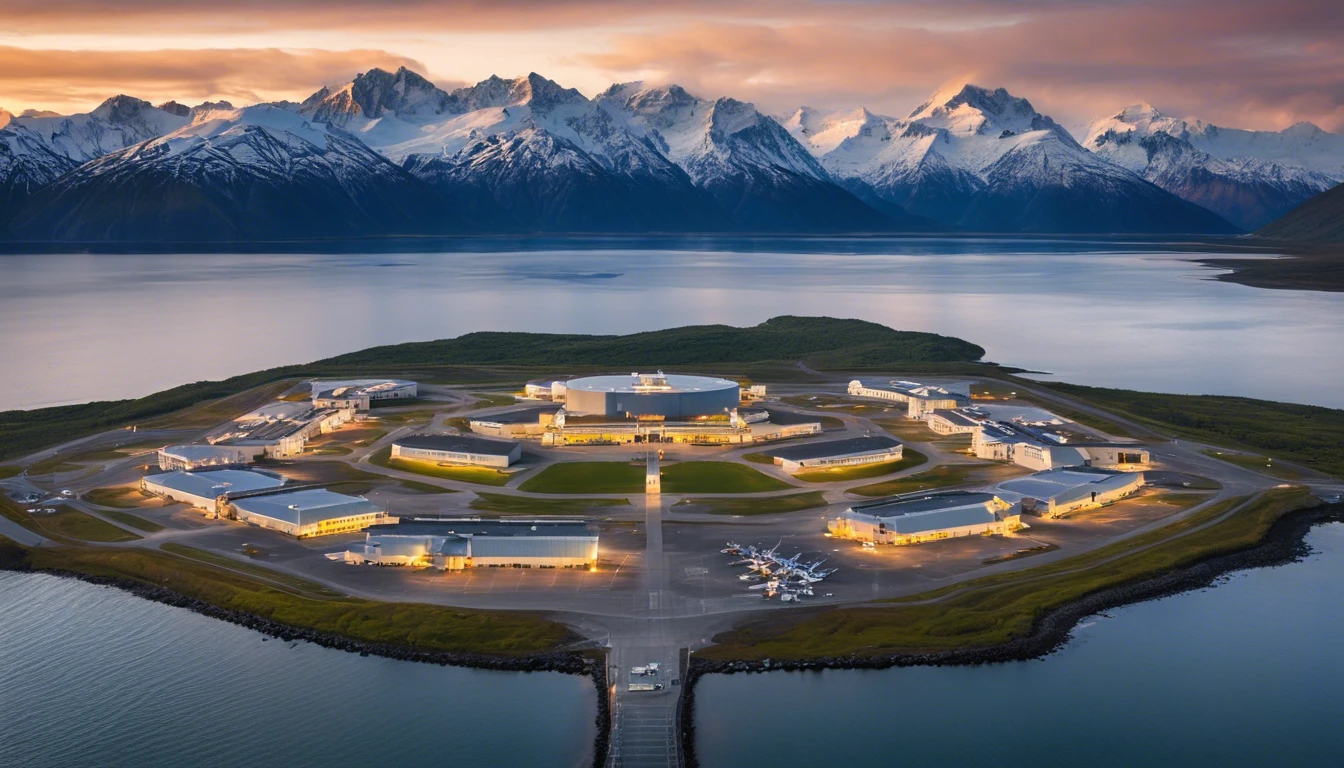
Unique Features of Alaska
Alaska, the largest state in the U.S., is unlike anywhere else. It's sparsely populated, which means you'll find wide-open spaces and a sense of solitude that's hard to come by in the lower 48. But it's not just the size that sets Alaska apart. Let's take a look at some of its unique features:
-
Denali: This mountain, formerly known as Mount McKinley, is the highest peak in North America. It towers over the Alaskan landscape at a striking 20,310 feet. Denali is also a part of the Denali National Park, one of the key attractions in Alaska that offers stunning views and opportunities for hiking and camping.
-
Glacier Coverage: Alaska is home to over 100,000 glaciers. These slow-moving rivers of ice create some of the most breathtaking scenery you'll ever see. You can witness this natural beauty in places like Glacier Bay and the Talkeetna Mountains.
-
Water, Water Everywhere: If you're a fan of water, you'll love Alaska. It boasts over 3,000 rivers and more than 3 million lakes. That's a lot of fishing, boating, and sightseeing opportunities!
-
Long Coastline: With a shoreline of 33,904 miles, Alaska has more coast than all other U.S. states combined. The coastal regions offer unique ecosystems, abundant wildlife, and unparalleled opportunities for exploration. The coastal town of Kodiak is a testament to this, with its rich wildlife and scenic beauty.
-
Extreme Daylight Hours: Due to its location in the Arctic, Alaska experiences some pretty extreme daylight variations. In the summer, you can expect up to 24 hours of daylight (a phenomenon known as "the midnight sun"). In the winter, however, daylight can be scarce, with the sun rising late and setting early.
-
Long Winters and Short Summers: Alaska is known for its long, cold winters and short, mild summers. This can be a big adjustment if you're coming from a more temperate climate. But many people find the snow-covered landscapes and Northern Lights displays to be worth the chill. Activities like cross-country skiing, dog sledding, ice fishing, and winter kayaking keep Alaskans active and engaged during the cold months.
In short, moving to an Alaskan military base will offer you an experience like no other. From the breathtaking landscapes to the unique weather patterns, there's always something new to discover in this vast and beautiful state.
Despite having a small population of around 730,000, Alaska welcomed over 2.2 million visitors in 2019, generating significant economic activity through its thriving tourism industry. The state is also known for its Permanent Fund Dividend Program, which pays full-time residents between $800 to $1,100 yearly from the state's revenue from mineral resources, as noted by Moving.com.
Living in Alaska also promotes a healthy, active lifestyle that fosters physical and mental well-being. The state's strong sense of community and opportunities for character development make it an enriching environment for children. However, the healthcare system in Alaska, while showing resilience and innovation, does face challenges in worker shortages and access, especially in rural areas. As such, families considering moving to Alaska have unique considerations regarding healthcare access and services.
Despite these challenges, the educational system in Alaska offers unique opportunities for growth, emphasizing independence, resourcefulness, and a connection with nature. Additionally, the cultural landscape of Alaska, shaped by its indigenous peoples and rich history, fosters a community where independence and support coexist. The state is proud of its cultural diversity with over 200 Native American tribes and language groups, as highlighted by The Honest Local.
Moreover, Alaska can be accessed by highway, air, and water, accommodating all types of transportation preferences. Communities such as Fairbanks, Juneau, and Palmer are highlighted for their appealing qualities including a sense of neighborliness, above-average education from K-12 to university levels, recreational activities, availability of various religious denominations, above-average medical care, a low crime rate, and reasonable local and state government management. The state's beauty, encompassing mountains, water, and landscapes, is also a significant draw. Personal accounts highlight Alaska as a place for adventure, opportunities to meet new people, and unique experiences such as seeing polar bears, enduring extreme temperature conditions, and witnessing the Northern Lights.
In conclusion, moving to an Alaskan military base offers an exciting opportunity to immerse oneself in a unique environment that combines breathtaking natural beauty, a strong sense of community, and a lifestyle that promotes well-being and character development.
